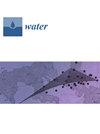An Automated Machine Learning Approach to the Retrieval of Daily Soil Moisture in South Korea Using Satellite Images, Meteorological Data, and Digital Elevation Model
IF 3
3区 环境科学与生态学
Q2 ENVIRONMENTAL SCIENCES
引用次数: 0
Abstract
Soil moisture is a critical parameter that significantly impacts the global energy balance, including the hydrologic cycle, land–atmosphere interactions, soil evaporation, and plant growth. Currently, soil moisture is typically measured by installing sensors in the ground or through satellite remote sensing, with data retrieval facilitated by reanalysis models such as the European Centre for Medium-Range Weather Forecasts (ECMWF) Reanalysis 5 (ERA5) and the Global Land Data Assimilation System (GLDAS). However, the suitability of these methods for capturing local-scale variabilities is insufficiently validated, particularly in regions like South Korea, where land surfaces are highly complex and heterogeneous. In contrast, artificial intelligence (AI) approaches have shown promising potential for soil moisture retrieval at the local scale but have rarely demonstrated substantial products for spatially continuous grids. This paper presents the retrieval of daily soil moisture (SM) over a 500 m grid for croplands in South Korea using random forest (RF) and automated machine learning (AutoML) models, leveraging satellite images and meteorological data. In a blind test conducted for the years 2013–2019, the AutoML-based SM model demonstrated optimal performance, achieving a root mean square error of 2.713% and a correlation coefficient of 0.940. Furthermore, the performance of the AutoML model remained consistent across all the years and months, as well as under extreme weather conditions, indicating its reliability and stability. Comparing the soil moisture data derived from our AutoML model with the reanalysis data from sources such as the European Space Agency Climate Change Initiative (ESA CCI), GLDAS, the Local Data Assimilation and Prediction System (LDAPS), and ERA5 for the South Korea region reveals that our AutoML model provides a much better representation. These experiments confirm the feasibility of AutoML-based SM retrieval, particularly for local agrometeorological applications in regions with heterogeneous land surfaces like South Korea.利用卫星图像、气象数据和数字高程模型检索韩国每日土壤湿度的自动化机器学习方法
土壤水分是对全球能量平衡,包括水文循环、陆地-大气相互作用、土壤蒸发和植物生长产生重大影响的关键参数。目前,土壤水分通常通过在地面安装传感器或卫星遥感来测量,欧洲中期天气预报中心(ECMWF)再分析 5(ERA5)和全球陆地数据同化系统(GLDAS)等再分析模型有助于数据检索。然而,这些方法在捕捉局部尺度变异性方面的适用性尚未得到充分验证,尤其是在韩国等陆地表面高度复杂和异质的地区。相比之下,人工智能(AI)方法在局部尺度的土壤水分检索方面显示出了巨大的潜力,但在空间连续网格方面却很少有实质性的成果。本文利用卫星图像和气象数据,采用随机森林(RF)和自动机器学习(AutoML)模型,对韩国 500 米网格范围内的耕地进行了每日土壤水分(SM)检索。在对 2013-2019 年进行的盲测中,基于 AutoML 的 SM 模型表现出最佳性能,均方根误差为 2.713%,相关系数为 0.940。此外,AutoML 模型的性能在所有年份和月份以及极端天气条件下都保持一致,这表明其可靠性和稳定性。将我们的 AutoML 模型得出的土壤水分数据与欧洲航天局气候变化倡议 (ESA CCI)、GLDAS、本地数据同化和预测系统 (LDAPS) 以及ERA5 等来源的再分析数据进行比较,发现我们的 AutoML 模型提供了更好的代表性。这些实验证实了基于 AutoML 的 SM 检索的可行性,特别是对于像韩国这样地表不均匀地区的本地农业气象应用。
本文章由计算机程序翻译,如有差异,请以英文原文为准。
求助全文
约1分钟内获得全文
求助全文
来源期刊

Water
WATER RESOURCES-
CiteScore
5.80
自引率
14.70%
发文量
3491
审稿时长
19.85 days
期刊介绍:
Water (ISSN 2073-4441) is an international and cross-disciplinary scholarly journal covering all aspects of water including water science and technology, and the hydrology, ecology and management of water resources. It publishes regular research papers, critical reviews and short communications, and there is no restriction on the length of the papers. Our aim is to encourage scientists to publish their experimental and theoretical research in as much detail as possible. Full experimental and/or methodical details must be provided for research articles. Computed data or files regarding the full details of the experimental procedure, if unable to be published in a normal way, can be deposited as supplementary material.
 求助内容:
求助内容: 应助结果提醒方式:
应助结果提醒方式:


